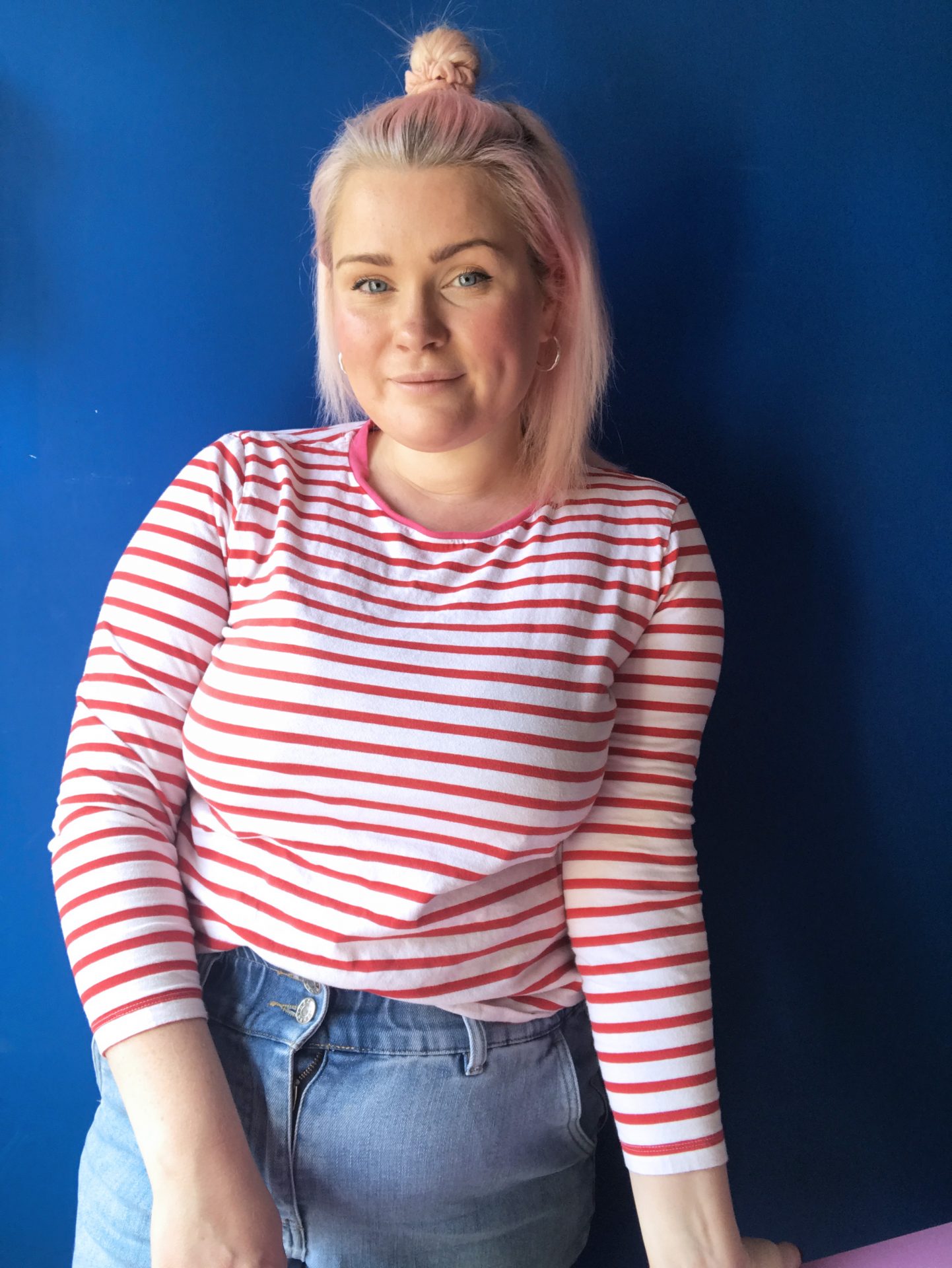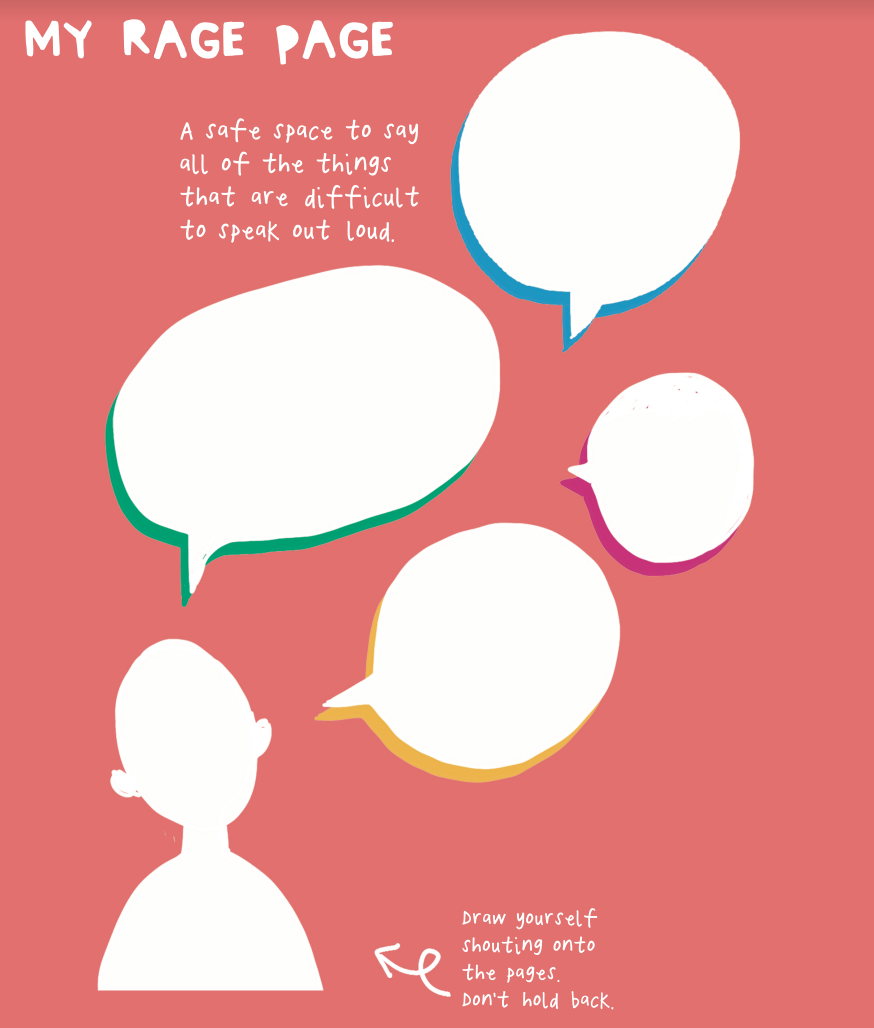Time to make a rage page to deal with all that pent-up anger and frustration
Written by Stacie Swift
Stacie Swift shares her special method for getting over life’s grievances – both big and small.
Instagrammer, illustrator and wellbeing warrior Stacie Swift grew up supporting her mum through mental health struggles. Later, when balancing being a mother of three herself with the demands of modern life, she began to use Instagram as her digital journal to communicate some of her own thoughts. An illustrator by trade, Stacie’s colourful and eye-catching feel-good posts of inspirational quotes, affirmations and tips have resonated with over a quarter of a million followers. Now she has created The Positively Awesome Journal, which is designed to promote mental wellbeing through a range of journaling activities. Here, she tells us why every woman needs to write a rage page…

Anger is a healthy and valid feeling, though not one that is always easy to express. We may not find it easy to control our messy emotions or share them appropriately, so we hold back and repress them.
We might feel silenced by stereotypes or judgments. There might not be a safe environment to display our frustrations. Maybe we are people-pleasers, conflict-avoiders, or just exhausted and not quite sure where to begin.
There are so many reasons why we might neglect to acknowledge our anger – yet, the practice of processing and voicing our vexations can be a real boost to our mental wellbeing (and our physical health, too). When we see red, we need tools to work through those moments constructively and positively.
One answer is to start a rage page.

What is a rage page?
An activity that requires no more than a pen, a journal and a pocket of time that suits you – practicable for even the busiest of us – this journaling activity is a safe space to offload all of those internalised thoughts.
No one to tell you you’re overreacting, nobody chiming in with opinions or interruptions, no expectations or consequences. It’s a place to put all of the things that can be hard to say aloud.
Start by creating a self-portrait and fill the rest of the page with speech bubbles. Imagine the release of shouting all of your grievances at full volume but with no repercussions or consequences – that’s what a rage page is for.
Fill the bubbles with your angry thoughts.
Put it all out there
A rage page is not reserved just for the big stuff. There’s also space for all of the incidental, everyday annoyances that add up. All the things you tell yourself to brush off, because other people wouldn’t let it bother them. They get to go on the rage page too, don’t hold back.
Being able to untangle emotions with pen and paper, to scream them out onto an empty page, is a cathartic process. Away from polished digital spaces and screens, this act of self-care is rooted in the messy and imperfect aspects of real life.
There’s room for total honesty and asserting ourselves without restrictions. Freedom lies in scribbled notes where there is not a like button in sight. Few other activities feel so exempt from self-policing and are entirely filter-free.
How does it help manage anger?
A rage page exists outside of politeness and niceties. It’s not insta-shiny or designed for anyone else’s approval. On a rage page, we can lay our thoughts bare – and when we’ve done that, it may be that we realise those feelings of anger are a signifier of other things too.
Giving a name to our flash points and identifying the relationships or aspects of our lives that we find most challenging can help us develop ways to cope, control our anxieties and exasperations, and adjust our behaviour accordingly.
I often say I have a short temper, but actually, that’s not entirely true. I get anxious when I feel out of control. I feel frustrated when I believe I am not valued or listened to. Feeling overwhelmed makes me irritable and snappy.
So with a young family, work, general adulting and trying to spin an endless number of plates, there’s plenty of opportunity for these emotions to bubble away under the surface. It’s not that my fuse is particularly short; it’s that I often feel under-resourced and over-stretched. That’s when those emotional bubbles boil over into rage.
Your anger is valid, but your rage page may help you pinpoint where these feelings start – and give you the power to make changes. Sometimes it will drive us to action; other times, the unburdening will be enough, and we’ll feel able to let it go. Next time you notice your heart rate increasing and the internal pressure building, give yourself a few moments to fill in your rage page.
Then ask yourself the following questions:
Why am I responding this way?
Can I name the emotions that came before I got angry?
Does this require action?
How can I respond differently next time?
Do I need emotional support?
Am I able to let this go or do I need more time to process these feelings?
How do I feel now?
Your emotional wellness matters. It’s important to take time to process your feelings. Even the angry ones.
Download a rage page from Stacie’s book here.
The Positively Awesome Journal by Stacie Swift is released on 8 July, published in paperback by Pavilion Books, £11.99.
Source: Read Full Article
